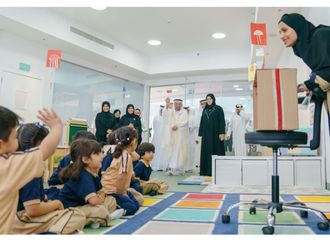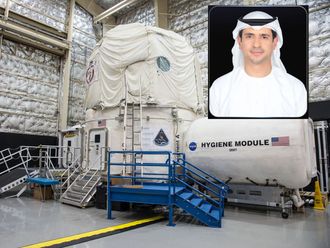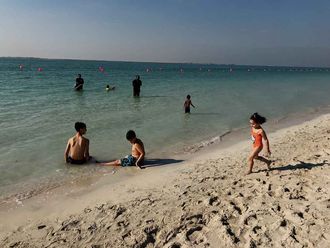Talal Abu Rahma. ©Gulf News |
Talal Abu Rahma can recount in gruesome detail the final moments of Al Durrah, who was hit by Israeli bullets as he huddled in terror by his father's side last October. Abu Rahma was hiding behind a nearby minibus filming the scene, which would soon be broadcast on televisions worldwide.
He said the death of Al Durrah, now hailed as a martyr in the Arab world, may not have been in vain if it helped win sympathy from the international community by showing a different side of the Intifada - Israel's excessive use of force and the resulting procession of innocent victims.
Abu Rahma, who is Palestinian, has worked as a photojournalist in Israel and the Palestinian territories for the France 2 channel for 14 years and received the Arab Media Award in Dubai on Monday for best coverage of breaking news.
"I am the only witness to the death of Mohammed Al Durrah. I know how he got killed. I know from which direction the bullet was coming. I lived with him for 45 minutes. I used to read about fear, but at that moment I was feeling it," he said.
"Live bullets came from all directions. I tried to make out who was shooting but I couldn't. It was raining bullets. Hundreds of Palestinians were running away, people were falling in the streets injured, ambulances were coming in to evacuate them."
He headed for cover behind a minibus parked nearby, where five others had also taken refuge, and started filming. "In that big mess, I heard a boy screaming. I looked across the street and saw the boy huddled by an older man, who was trying to shield him from the bullets. By that time, the shooting was only coming from one side. The Palestinians were shooting only for the first five minutes. After that, the shooting was only coming from the Israelis.
"For the first 30 minutes, the boy was alive, but he was almost dead from fear. Then, I heard something go boom and a cloud of dust. I was filming at that point so you can see it. When the dust cleared, I saw the boy lying down on his father's legs, bleeding from the stomach.
"We were screaming like crazy, 'The boy is dead! Ambulance, ambulance!' But nobody could hear us. They kept on shooting. It was not far away, maybe 30 metres. One of my colleagues said, 'Let's jump and see what's going on'. We tried to cross the street, but we couldn't because of the bullets."
An hour later, Abu Rahma and the others managed to escape. He returned to his office in Gaza where he met another Palestinian journalist working for CBS. "When he saw the footage, he started screaming, saying 'Oh, this is my relative. I am married to his sister and that's his son, Mohammed! They were out this morning to buy a new car.'"
Abu Rahma sent the footage to the Jerusalem office, which then sent it to Paris via satellite. The Paris office decided not to sell the footage, but simply to give it to anyone who asked in order to increase its exposure, Abu Rahma said.
Abu Rahma is incensed when he is referred to as a "Palestinian journalist" because he feels it casts doubt on his objectivity. "We are professionals. We broadcast whatever we see on the ground. No one is making up any stories. No one is filming anything that is not reality.
If an Israeli child were killed, we would have to film it. If a Palestinian child were killed, we would have to film it. It is our job," he said. "There is no difference between me and my French colleagues. This is journalism - the search for truth."












